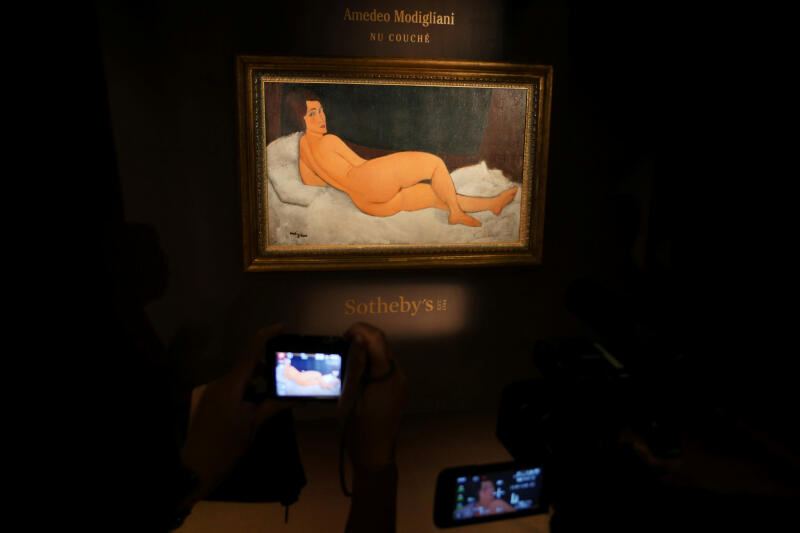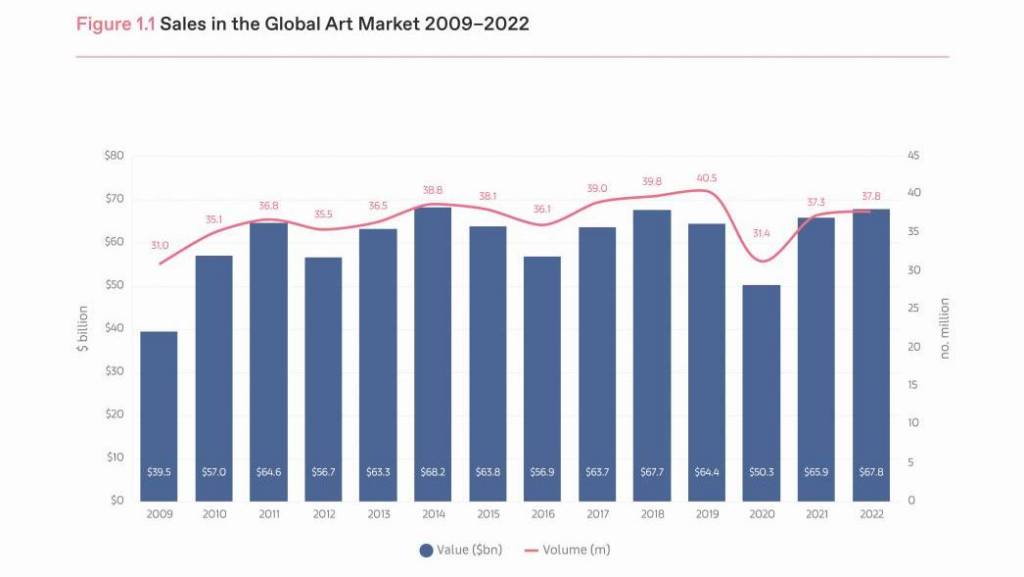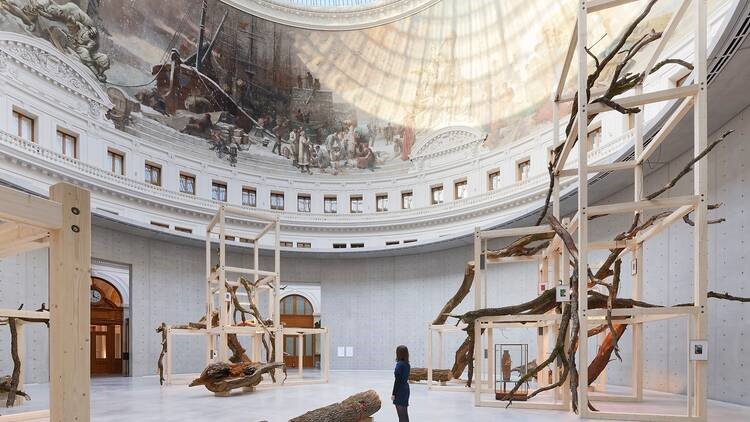How can one evaluate the worth of an artwork?
“The Elements to Consider When Determining the Value of an Artwork”
Assessing the value of a work of art is a complex process that takes into account several factors.

© Staff.Reuters
Let’s examine eight essential aspects in the process of evaluating a work of art:
Artist Recognition and Fame
The notoriety and recognition of the artist are key factors in evaluating the value of a work of art. Established and respected artists often have a higher intrinsic value due to their reputation and contribution to art history.
This recognition is achieved through major exhibitions, glowing reviews, prestigious awards, and presence in renowned museum collections, which sparks significant interest from collectors and maintains the value of their works in the art market.

© edwardquinn.com
Aesthetic and Artistic Quality of the Work
The impact of the aesthetic and artistic quality of a work on its value is undeniable. This characteristic relies on a combination of factors, from technical mastery to emotional expression.
Firstly, the technical quality of the work plays an essential role. Pieces that demonstrate a high level of skill in their execution, whether it’s precision in strokes, manipulation of materials, or complexity in composition, are often highly appreciated.
Furthermore, the emotional impact of a work on the viewer is equally important. Works that manage to evoke deep emotions, whether joyful, melancholic, contemplative, or provocative, tend to captivate attention and create a lasting connection with their audience.
Thus, this fusion of technical skill and artistic expression often leads to increased appreciation of the work and, consequently, a higher value in the art market.
Rarity of the Work
The rarity of a work of art is a determining factor in its value on the market. When a work is rare, especially if it’s unique or if there are only a few copies, its intrinsic value is often higher.
This rarity can stem from various circumstances. Sometimes it’s related to the nature of the work itself: a unique creation, for example, or a limited series produced by the artist. In other cases, rarity may result from external circumstances, such as the disappearance or destruction of certain pieces over time.
Whatever the reason for its rarity, it gives a work a unique and sought-after character. Collectors and art enthusiasts are often willing to invest more in rare works, recognizing their value as unique or rare witnesses to the talent and creativity of the artist.

Oil and gold leaf on canvas
180 x 180 cm
Belvedere Palace, Vienna
©Wikimedia Commons
Cultural Influence of the Work and the Artist
The cultural influence of a work and its artist can play a crucial role in determining its value.
Works that have marked a turning point in art history, influenced other artists, or sparked debates and reflections within society often have higher intrinsic value. The cultural influence of a work can indeed be measured by its impact on artistic trends, on the perception of certain social or political issues, or even on how it has been received by the general public.
Similarly, artists whose work has left an indelible mark on the cultural landscape, who have innovated in their field, or who have been standard-bearers for major artistic movements, may see the value of their works increase accordingly.
These factors thus contribute to shaping the reputation of the artist and their work, which is often reflected in their value on the art market.

Performance at the Museum of Modern Art, New York, March 9 – May 31, 2010
March 9, 2010
©Andrew Russeth
©Wikimedia Commons
Provenance History
The provenance history of a work of art can have a significant impact on its value.
A work that has been owned by renowned collectors or has an interesting history behind it can generate increased interest from collectors. For example, if a work has been exhibited in prestigious institutions or mentioned in specialized publications, this can enhance its value by attesting to its recognition and importance in the art world.
Besides, provenance can also be an indicator of the authenticity of the work. Works with well-documented and verifiable provenance are generally considered more reliable and therefore more valuable on the market.
To sum up, the provenance history of a work adds an additional dimension to its value by providing information about its past and attesting to its quality and importance in the art world.
Trends and Variations in the Art Market
Variations in the art market play a crucial role in the valuation of works.
When an artist suddenly gains popularity, this can have a significant impact on the value of their existing works. This increase in demand can lead to a rise in prices on the art market, as collectors are willing to pay more to acquire a work by a trendy artist. Similarly, artistic trends and movements can influence buyers’ preferences, leading to fluctuations in the value of works based on their relevance in the current artistic context.
However, it is important to note that these trends are often subject to change and can be influenced by external factors such as the economy, cultural events, or market actions. Therefore, while market trends can play a role in valuing works of art, other factors such as artistic quality, rarity, and cultural influence continue to influence their intrinsic value.

Graph representing sales figures in the global art market from 2009 to 2022
© Art Basel and UBS Art Market Report 2023
Marketing and Promotion
Marketing and promotion are essential aspects in valuing a work of art. A well-thought-out strategy can increase the visibility of the work, generate interest from collectors, and boost demand.
Through carefully organized exhibitions, quality publications, and active presence on online platforms, a work can gain recognition and prestige.
Effective promotion can also associate the work with renowned artistic events or collaborations with other recognized artists, thus enhancing its attractiveness and price on the art market.
In summary, marketing and promotion can play a decisive role in elevating the value of a work of art.

© Tadao Ando Architect & Associates, Niney et Marca Architectes, agence Pierre-Antoine Gatier. Photo: Florent Michel/11h45/Pinault Collection.
© Kimsooja/ADAGP, Paris, 2024.
Condition and Conservation of the Work
The conservation status of a work of art is a crucial aspect of its value.
A work in impeccable condition not only testifies to the care taken in its conservation but also to its authenticity. Collectors appreciate pieces that retain their original integrity because they offer an authentic artistic experience true to the artist’s vision.
However, works that have suffered damage, alterations, or significant restoration may see their value decrease. These alterations can compromise the integrity of the work, which may deter collectors from acquiring them at a high price.
In summary, the conservation status of a work of art is a determining factor in its value. Well-preserved and in good condition pieces tend to be more sought after on the art market due to their authenticity and preserved artistic integrity.
In conclusion, assessing the value of a work of art is a complex process that takes into account a multitude of factors, from the artist’s fame to the condition of the work, with each element contributing to determining its significance and appeal on the art market.
